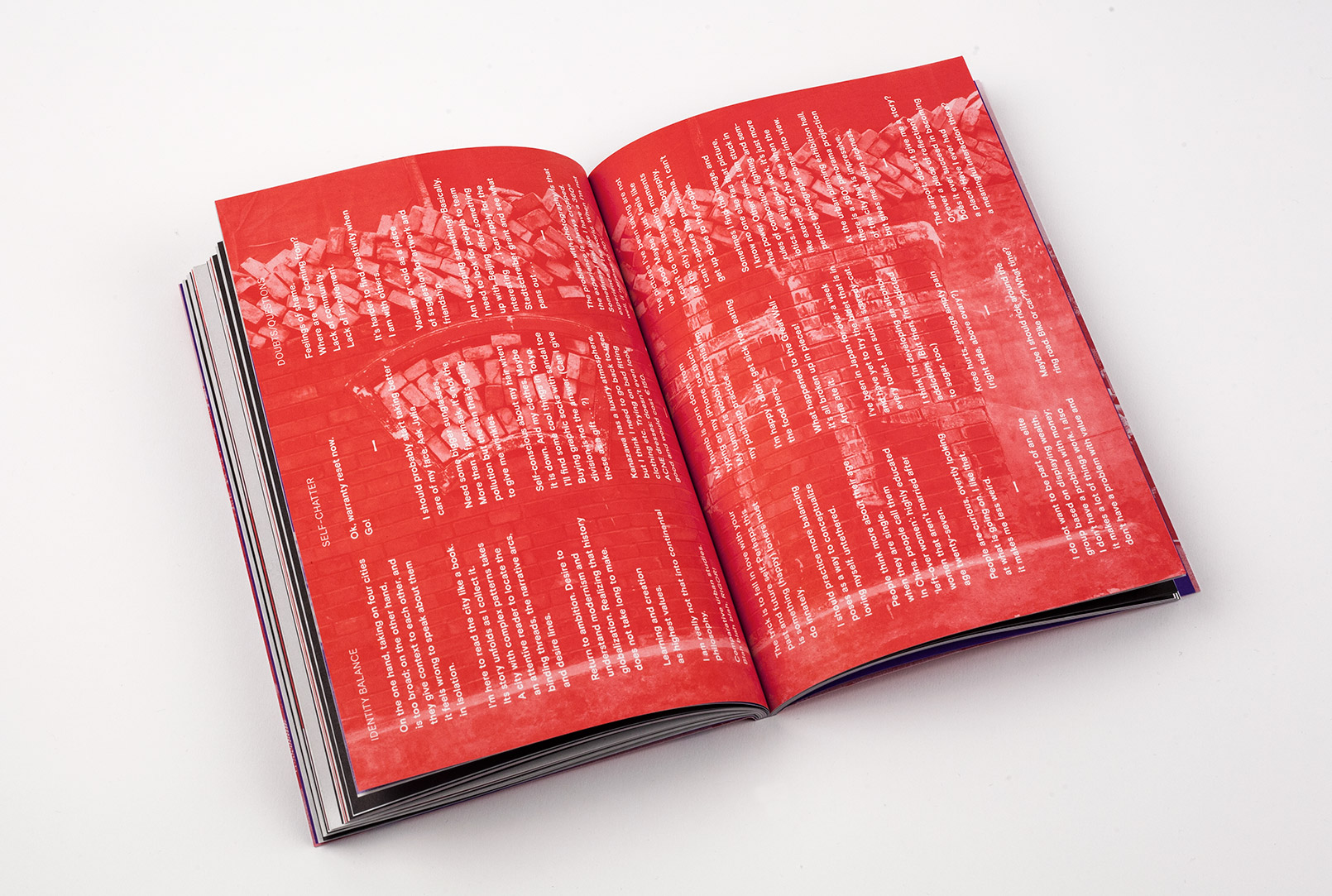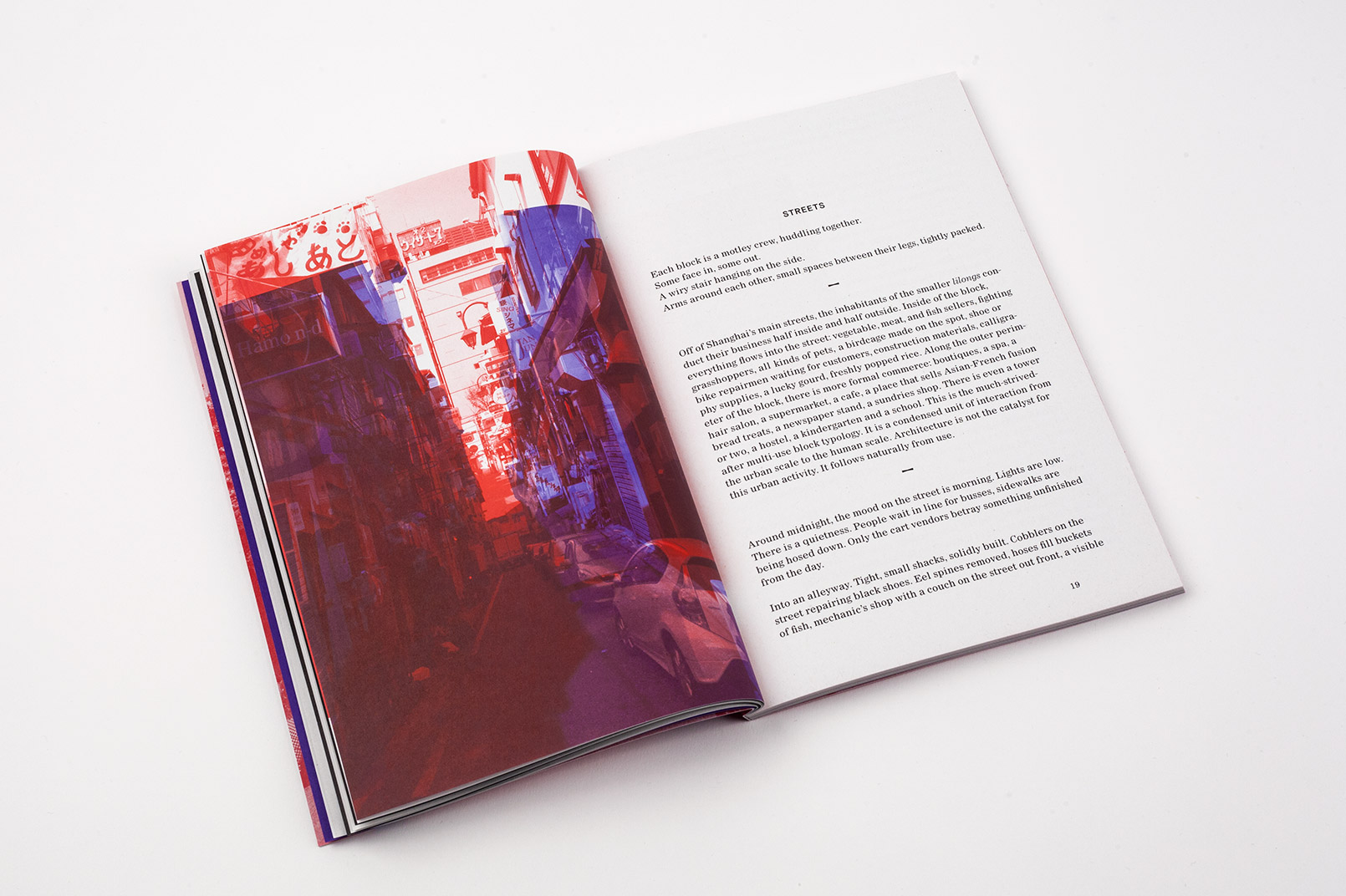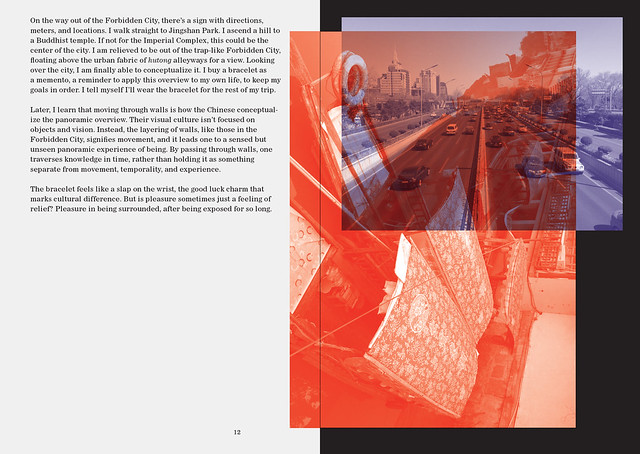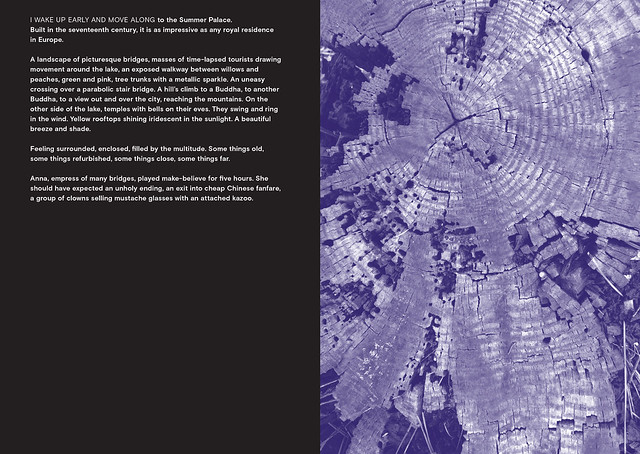
Naiyer Masud, Penguin, 2015.
A malfunctioning weathervane forces the wind to realign itself. A collector travels all over the world tracking down tools used in crimes against corpses. A gardener frets over the consequences of stealing the Navab of Lucknow’s prized myna.
Minutiae and mystery form the warp and weft of Naiyer Masud’s densely woven, enchantingly hypnotic stories, combining precisely delineated characters and objects with accounts of inexplicable phenomena and the arcane arts. Compiled and introduced by the acclaimed Urdu scholar Muhammad Umar Memon, this edition collects all thirty-five of Masud’s stories for the first time, establishing him as one of the most original voices to emerge in world literature in the past few decades.
This book is a collection of short stories by writer, Naiyer Masud, who originally writes in Urdu. He is considered to be an important short story writer in the language. Naiyer Masud: Collected Stories contains 35 stories which have been translated into English by Muhammad Umar Memon. Masud's first collection, Seemiya was also translated by Memon into English and published under the title, The Occult. It was a success and readers in India and abroad, who were introduced to his distinctive and strange world of fiction, were overwhelmed by the subject matter of his stories. His stories have also been translated into French, Spanish and Finnish.
The collection would be welcomed by his readers, who would be happy to find many of his stories compiled in a single volume. The book contains four collections of Masud's stories, namely "Seemiya" (The Occult) comprising five hauntingly memorable stories; "Essence of Camphor", consisting of seven stories, "The Myna From Peacock Garden" and "Ganjefa", both contain ten stories each. There are three stories under the category of "Miscellaneous".
These stories introduce the readers to Masud's world of fiction. His characters belong to the world that we know and experience and yet they are rendered strange, even weird and uncanny. They make us wonder with awe and surprise. The stories from these collections are matchless in their beauty and bear the stamp of the writer's style. The stories in the first collection, "The Occult", still hold me in thrall. All the five stories in this collection namely, "Obscure Domains of Fear and Desire", "The Colour of Nothingness", "Snake Catcher", "Seemiya" ("The Occult"), and "Resting Place" are unforgettable.
"Essence of Camphor" contains stories with similar kind of background and subject matter that seems to be a little out of this world. One of the stories deal with the subject of a tomb being built in the lifetime of a sultan and the narrator acts as the chronicler of the events. In the story "Janus", a strange character appearing out of nowhere, goes to the house of a doctor who lives with a big dog. He goes to return the money another servant owed the master. The doctor not only finds the man weak and hungry, but too weird to fit any description. The strain of the journey, onslaught of the bad weather and the attacks of the dog, leave their effect on the man. He faints in the end and whether he dies or not is not known, but the doctor goes upstairs and falls asleep.
"Epistle" is the story of an old woman who thinks her son is ill. She wants him to visit their old hakim whom he succeeds in finding. The perch of the physician is close to the graveyard. It was believed that a snake had kept guard over the hakim' s family for generations. "Interregnum" is the story of a man who works as a mason and tries to bring up his child in such a manner that he takes him more as a servant than a father. After the death of his father he comes to find the insignia of his family which is in the form of a fish. "Ba'i's Mourners", deals with two elderly couple, Ba'i and Sahib, whom the narrator watches from the next house. But when suddenly Ba'i dies and the women of the area gather to mourn, Khanam discovers that the jewellery of the deceased had been mysteriously missing. In "The Chief Accountant of the Pyramid" a caliph discovers an inscription on a stone slab of a pyramid that says: "We had it built in six months; let's see anyone destroy it in six months." The caliph brings labourers and starts to break it open. Out of it comes a small vault which has precious stones and an inscription: "So you could not demolish it. Take the remuneration for your labour and depart." The caliph orders his accountant to assess the expenses that had been incurred in the venture as well as the value of the stones. The chief accountant, was puzzled when he finds the value of stones and expenditure incurred matching each other. Afraid that the accounts would not please the caliph, he leaves, never to return. There are many stories in the collection whether in "Ganjefa" or under "Miscellaneous" with similar subject matter and characters that seem to be extraordinary.
Masud's stories have the stamp of peculiarity and he seems to be obsessed with the strange and the weird. Even some of the stories that deal with love or sex are given a strange twist so that they move to the borders of a world that lie in between the ordinary and the inexplicable. Though Masud sometimes seems to experiment with the structure of the short story, the lack of variety is noticeable in the use of the form. Except for one or two, all the stories are written in the first person narrative. Also, his stories are too lengthy for a modern reader used to shorter pieces. Masud's characters are a part of the familiar world and yet he manages to add to them something that takes them to a different height. The manner in which he sketches them, and the craft that he employs, recalls the art of masters who polished their work in such a way that one could only look at them in wonder.
There is a continuous strain of poetry that runs through Masud's prose and the thoughts employed conjure a world of obscure meanings. If the poetic strain is sensuous like John Keats' poetry, his eerie atmosphere surpasses the world of Walter de la Mare.
Masud does not take his readers to the world of the supernatural but hovers in between the natural and the unnatural, the humdrum and the uncanny. These stories have a haunting effect that increases rather than ebbs when they end.
When the world is torn between conflicting ideologies, Masud's stories take the reader to a world where the tortured modern man yearns to reach in order to give his soul a semblance of peace. He is a different kind a of storyteller, but certainly one of the best writers of our time. - Shams Afif Siddiqi
Naiyer Masud, The Occult, Trans. by Muhammad Umar Memon, Penguin India, 2013. [1983.]
Haunting in their unadorned and austere beauty, the five interwoven stories of The Occult have no discernible plots, their terrains are unidentifiable, the characters that inhabit them have no names. Houses possess domains where you are overcome with fear or desire without knowing why. A lone dark cloud that brings sudden rain traverses the interpenetrating landscape of the five stories. Time passes swiftly in some locations and is knotted thickly at others. An exquisitely made artifact could either be the model for a palace or a memorial of it. Has the woman fleeing managed to escape once again or has she drowned in the fast-flowing river? A narrative thread from one story may be taken up and twisted in another. Together the stories create a shimmering maze where meaning is elusive but from which the enchanted reader never wants to exit.
” [Imam] Ja’far Sadiq
: If this pattern that you and I are looking at were disorganized, its lines jumbled together and extending out in each direction so that it didn’t come together as a unified geometrical form, or was the image of something we could recognize, would we then still have enjoyed looking at it?
Jabir ibn Hayyan:
Certainly not!”
This is an excerpt from the preface of the book and beautifully sums up as a precursor to what lies ahead. The conversation is about the orderly geometrical patterns that one is familiar with and because of which the familiarity is enjoyed and appreciated but what if there were no organized patterns just a mass of lines which did not make any sense? It is this mass of lines which characterize Naiyer Masud’s writings. There is no order or pattern being followed and yet out comes five astonishing stories that will stay with you like the smoke left behind when camphor is burnt up. The preface is a commentary on what one encounters in these five stories which apart from being extremely dense have a strong Kafkaesque touch. The stories have macabre settings with abrupt changes and there is no particular order to the five stories, although if one reads carefully through this quote it acts as a guide. The stories have consciously been given a pattern which we will term as haphazard as the above mentioned lines of the preface say.
A careful reading and one will be able to see the connection in the stories as well as see the timeline common to them.
The stories have given a particular emphasis on angles, arches and slivers present in a house through which one could see. These are introduced in the first story and remain very important till the very last one. In the first story at the very beginning the incident which takes place is related to these arches, angles and slivers and influences the life of the narrator as he goes about it.
In the opening story
Obscure Domains of Fear and Desire in the collection, a young man and his distant relative are attracted to each other but nothing much happens as the inherent fear of being “seen” looms large and later on when the young man takes up the job of inspecting houses; he categorizes rooms into domains of fear and desire. The story is not as simple as it seems and one who reads it realizes how complicated such a simple plot can be made. The meeting with a voyeur in a dark place with the powerful imagery that is created when they meet and silence that percolates throughout the story like a thick mist leaves a reader mystified.
In the second story
The Woman in Black, again the plot is a simple one where a courtroom is being set up in a house and a woman is to be judged, the woman is dressed all in black but this where the story shifts to Nusrat, a woman who sits under a tree in the house and keeps looking at the physician, an old man. The story is being told by the narrator who is a young boy. There is a pause in the story and we are taken several years ahead where now the young boy has grown up and revisits the house emptied of its inhabitants.
In all the stories the imagery of a house is a common one where the house does not evoke a sense of comfort but feelings of fear, nostalgia and melancholy. The houses have a set of emotions which are a part of every house visited in these stories. Throughout the stories there are no names being given to the characters that form a part of these stories and the narrator remains unnamed in all the stories signalling that the condition one goes through is a common one and not something that can be affixed to a specific person.
The third and the fourth story have a supernatural quality to them and remind one of the stories written by Edgar Allan Poe. The way horror seeps into these stories is not to repel a reader rather it makes one addicted to the way it has been written and described. Sadness and melancholy prevails in these stories. In the beginning of the story
Snake Catcher, the description of the people recalls to one’s mind a poem by Nissim Ezekiel-
Night of the Scorpion where the reactions of the people who gather around the victim is similar to the one mentioned here. As
Maar Geer(The Snake Catcher ) mentions that
” every creature that hunts has a relationship with its prey” fits well with the way the storyline proceeds. The
Bezoar is a stone that has a life of its own according to the snake catcher which sucks out the snake’s poison from a victim’s body. It is the vanishing of this stone that ends the snake catcher’s life as without it his future seems bleak as well as his memory when it comes to the remedies to cure the poison fades. The description of the jungle by the narrator takes him back to his house that is full of curios and they form an important part in the following story- The
Occult where those very curios come to life in the imagination of the narrator. There is a repetition of dialogues in the
Occult for example the narrator and a man are having a conversation regarding colours and the man mentions the colour black as being
the colour of nothingness – the exact words mentioned by the narrator to Nusrat in the story-
The Woman in Black. It is towards the end when all the characters seem to merge that one realizes the maze one had to traverse.
The author has deliberately changed the traditional narrative structure and narration. The stories have a connection which one will be able to trace by the time one finishes the last tale especially in regard with the characters if not with motifs (which are pretty dense as well as elusive). In narration not only are the sentences elliptical, at times the narration changes without using digression and other narrative tools.
The book has been translated from the original Urdu
Seemiya by Muhammad Umar Memon. The interesting part is how the author was actively involved in the overseeing of the translated version of his work and approving it as Memon in his notes informs the reader. Language can be seen as an indicator of a specific culture- for example in the book a short story titled
” Snake Catcher”, the first page of that story begins with
” Maar -Geer” and as a footnote the translator has mentioned that he has retained the original phrase used for a snake catcher rather than stick with the translated version. Apart from this nowhere in the book does one come across any other colloquial terms; the books has been successfully ‘ transcreated’(Here ‘Transcreation’ is defined as holding an entirely different view from the original text when it comes to language.) for an English reading audience and hence disappoints the reader with not retaining much of the original text. The book reads like any other English text with no sign whatsoever of the original language- Urdu. The role of a translator becomes important in bringing to light the original text for a wider audience who does not have access to the original one. One cannot deny that when one reads the book, the ethereal quality which the five short stories possess has been well captured but the disappointment lies with the book being unable to bring to the table the nuances of the original language. One cannot blame Memon altogether as the style of writing chosen by Masud demands that the sentences retain a continuity and much depends on what has come before it therefore in order to retain this in English becomes a Herculean task.
When it comes to his style of writing, the Urdu writer’s style is unique in itself. The five stories can be read as complete in themselves but when you look closely then a thin thread binds them together. The last story (
Resting Place) seems to complete the circle started by the first one and one notices nearly all the characters in the previous stories coming together in the last story. That in no way gives the book a closure; it remains outside the parameters of a conclusive ending. If one tries to look for meanings in every story then that is hard to grasp as they evade being understood. The labyrinth of conversations and descriptions that each story possesses makes it difficult as a reader to maintain a continuity of incidents that occur in a story, there are instances where certain moments from a previous story have been mentioned in the following one and that adds to the abstract quality present in his work.
The book has been written to be lived in for that moment. It is the obscurity and the unwillingness to be pinned down to a particular form of writing that makes this collection of short stories by Naiyer Masud an unputdownable one. This book will be an important landmark for students of literature especially those who are interested in the theories of Gaze and Narration. Overall an avid reader especially fans of Kafka and Poe will love these tales. These tales especially the author’s grasp on the geometry of the house does evoke strong memories about one’s houses and for some after reading this book they might not be able to look at houses in the same way again. -
www.writersasylum.in/2014/03/book-for-the-week/adults/the-occult-review/
 Naiyer Masud, Snake Catcher Stories, Trans. by Muhammad Umar Memon, Clockroot Books, 2005.
excerpt from “The Woman in Black”
Naiyer Masud, Snake Catcher Stories, Trans. by Muhammad Umar Memon, Clockroot Books, 2005.
excerpt from “The Woman in Black”
Readers of world literature may find something of Kafka in
Snake Catcher—or Borges or Garcia Marquez or Murakami. But only if cardamom can be said to be something like cinnamon. It’s best to taste, and call these fictions Masudian, as no other has rendered a fictional world quite like that of this acclaimed storyteller.
Imagine that a single arch is all that remains of a once grand and storied building, and say that a story might be like that arch: spare, precise, singular, open, a portal affording a glimpse of an elaborate past and an uncertain future, of this world and a dream world beyond. Wasn’t there—once—a house? A city of arches and passageways and verandas? A lover peering in a window? Whatever else remains indeterminate in these eleven stark stories, it is certain that at the center of each stands a solitary “I,” one among family and neighbors, one from whose consciousness the story emerges. Pulled along by this always compelling voice, we inhabit in these stories a world in which illusions are as stark as day, and the threads by which we take hold of life are only kindness, and mystery, and want.
Masud’s highly evocative, sensuous stories, often told as remembrances of a long-ago childhood, are unique in contemporary Urdu short story writing. Exhibiting an open-ended quality and a seeming lack of the resolution found in more conventional fiction, they occupy a singular niche in the rapidly evolving, diverse artistic landscape of modern Urdu letters, which has experienced the development of surrealism, Marxism, experimentalism, postmodernism, and postcolonialism in its annals. —
Carlo Coppola
Masud’s stories articulate a protest that is full of wider social resonances. He combines progressive ideas in a modernist idiom, reflecting on a fragmentation of the self in a vocabulary that suggests a still evolving sensibility. —
Jyoti Nair Belliappa
A triumph of the spare and enigmatic. He has been aptly compared to Kafka, Borges, Poe, Dostoevsky, and others, and one imagines that he wouldn’t object… —
Michelle Reale
His stories are not only unlike anything in contemporary Urdu fiction, but in Indian literature on the whole. —
Indiaclub.com
I could not get more pleasure than I do in welcoming Naiyer Masud’s
Snake Catcher into the world. This is a definitive volume, spanning his early to latest writings, leaving the reader spellbound by his elliptical and dramatic prose. —
Sara Suleri-Goodyear
The most extraordinary fictional voice to have emerged in world literature this decade. —
Amit Chaudhuri
Cryptic suggestiveness dominates 11 stories gathered from three collections by the Indian author (who writes in Urdu) of
Essence of Camphor (2000).
As we learn from the translator’s Introduction (itself fairly opaque), Masud is both a scholar of Persian
and Urdu and a renowned translator of Kafka. The great Czech writer’s influence is felt throughout, especially in the rigorously compressed tale (“Resting Place”) of a nameless wanderer invited to become one of a welcoming household’s “priceless objects,” and the superb “Custody,” about a village shop whose successive proprietors succumb to madness, the (again unnamed) narrator who undertakes to run it
and raise two apparently orphaned baby girls and a complex local history that expresses the truism that “one has to endure everything.” Stoical forbearance also characterizes the aging man whose increasing memory loss is temporarily arrested when he recalls a charmingly sociopathic family friend (“Allam and Son”); the clerical worker whose fortunes vacillate during ownership disputes over “The Big Garbage Dump” located
inside a lavish domicile; and the house inspector whose thwarted love for his sister-in-law (and aunt) leads him inexorably toward a paralytic madness (“Obscure Domains of Fear and Desire”). Images that recur through several stories (a sheltering, perhaps smothering tree; an inchoate jungle bordering a cleared village; the limited efficacy of healers) intensify an overpowering impression of fatalism that’s perhaps best expressed in the eerie title story, an enigmatic parable of the danger inherent in nature, fear of the unknown and the inevitability of death and change; and the terse, limpid “Lamentation,” whose narrator finds in the “wasteland communities” he explores both a spectrum of indigenous responses to mortality and a summons he cannot ignore.
Masud’s compelling, sometimes obscure stories do not always fully reward the reader’s attention. But they’re usually as hard to forget as they are to comprehend. -
Kirkus
 Naiyer Masud, The Essence of Camphor, Trans. by Muhammad Umar Memon, The New Press, 2000.
The Essence of Camphor
Naiyer Masud, The Essence of Camphor, Trans. by Muhammad Umar Memon, The New Press, 2000.
The Essence of Camphor is a collection of short stories by Naiyer Masud, considered one of the foremost Urdu short-story writers in India. This collection contains English translations of ten of his stories.
This is not the sort of book I would have picked up on my own. It was
Pratul who urged me to read it, comparing Masud's style to that of Haruki Murakami. While Masud and Murakami write about completely different people in completely different cultural contexts, I feel Pratul's comparison is not entirely inapt. There are many parallels between the works of the two writers, which is not surprising considering both of them are strongly influenced by Kafka.
Masud's stories are surreal and dreamlike, and as one would expect, they don't conform to traditional narrative structures. Many of them are told in a stream of consciousness style by narrators who appear to be reminiscing about their early years. Themes of childhood and family life in old India are prominent throughout. Someone on Goodreads called them "mood stories" – stories with the sole purpose of evoking a sense of time and place, or I suppose the lack thereof. In other words, Kafkaesque. Some of them are vaguely terrifying (
Obscure Domains of Fear and Desire,
The Woman in Black), others are sorrowful (
The Essence of Camphor,
Nosh Daru), all of them are beautiful. Masud captures the sights, sounds and smells of old Lucknow in such vivid detail that you almost start reminiscing about the good old days yourself.
Beautiful as they are, these stories are also inscrutable. I rarely read the introduction to a book before reading the book itself, but I'm glad I broke my rule this time. Muhammad Umar Memom – who wrote the introduction and translated some of the stories – has this to say about Masud's work:
[...] reading Masud's stories evoked the sensation of being thrown headlong into a self-referential circularity.
Which I interpret to mean:
don't think too hard kids, just enjoy the ride. And what a ride it is.
To be honest, I often felt frustrated with this collection. I would not recommend reading it from beginning to end in one sitting. This is a book best consumed slowly, over a span of many weeks. Despite my frustration, some of these stories have left a deep impression on my mind.
If you enjoy Murakami and/or Kafka, I'd highly recommend picking up a copy of
The Essence of Camphor. If you're not into surrealism, keep away. -
Ankur Sethi
Masud, Kafka's translator into Urdu, is highly considered for his fantasy-tinged tales in his native India. In the title story the narrator, who makes perfumes using a camphor base, assembles filmy memories of his childhood to show how the odor of camphor became associated with Mah Rukh Sultan, the invalid daughter of his next-door neighbor, and her death. The narrator of ""Sheesha Ghat,"" like a character in a Brothers Grimm tale, is given away by his father because he has a disabling stutter, which his father suspects his new wife will not want to endure. He is sent to live with Jahaz, a street clown living on an island ruled by Bibi, the widow of a gangster. The latter's lovely daughter, Parya, has grown up entirely on Bibi's boat, and has accrued a sort of mythical glamour from having never touched dry land. One day Parya tries to walk on water, and the whole atmosphere of the fantastic suddenly sinks with her into the waves. Another folkloric story, ""Ba'i's Mourners,"" has a marvelous beginning: ""Few people know--perhaps none--that for a long time in my boyhood I used to be mortally afraid of brides."" The narrator's dread derives from a family story about a bride who was bitten by a centipede in the carriage that took her from the parental home, so that the groom opened the carriage door upon a corpse. Masud likes to play his stories off each other; in this tale, the bridal story shifts to an account of another death, that of the narrator's next-door neighbor, Ba'i, once a famous singer. Like all true connoisseurs of the fantastic, Masud's talent is for finding just those symbols that will convey the obscure oppression of claustrophobia. -
Publishers Weekly
The complex burdens imposed by memory and the intricacies of familial love and obligation are analyzed with breathtaking subtlety in this brilliant debut collection of seven tales, written in the Urdu language by an Indian-born writer, critic, and teacher. Restrained emotion pulses powerfully through the lovely title story, in which a `parfumier` seeks the precise mixture of ingredients that will evoke the presence of a girl who died tragically young; the unusual supernatural stories `Sheesha Ghat` and `Ba'i's Mourners`; and `Interregnum,` the story of a grieving son's gradual acceptance of his father's death—`inherited,` along with the latter's possessions. Even more interesting are `The Myna from Peacock Gardens,` an `Arabian Nights`–like fairytale about a loving father who risks the wrath of a powerful sultan in order to fulfill his young daughter's wishes; and `Obscure Domains of fear and desire,` a curiously suggestive, possibly allegorical story that portrays a callow young man's descent into speechlessness and madness, caused by his attraction to his mysteriously `alluring` aunt. Wonderfully absorbing and rewarding: the work of a fully mature, highly accomplished artist. -
Kirkus
"(A) skillful mix of otherworldly intimations and psychological pungency. The remoteness of Naiyer Masud's cagey supernaturalism feels authentic, not manufactured for export. (...) Each of the volume's tales dramatizes a meeting of sickly sweet dreams and earthy appetites, a mysterious realm that smothers rather than shocks weakened souls." -
Bill Marx, Boston Globe
Essence of Camphor collects seven of Naiyer Masud's stories (previously collected in three volumes published between 1984 and 1997, in the original Urdu). The publication in the US and Europe of any Indian literature not originally written in English is always welcome, and Masud's work certainly deserves to be translated. Translation, of course, brings with it problems of its own and the stories in this volume, worked over by five translators and teams of translators, do not read quite as fluidly and neatly (and consistently) in English as one expects they do in Urdu. Nevertheless, given the paucity of Urdu literature available in English, one must be pleased with whatever one finds.
These stories by Masud are a find. They are all narrated in the first person, common (yet complex) people with stories to tell. The tales drift and meander, with a dreamy quality to them, but they ultimately coalesce around something solid.
The title story is told by a perfume-maker. He is not a master of either the old or the new techniques of perfume-making, but his unique method is also successful. The secret to his perfumes is that he uses camphor, and that he manages to keep the essence of the camphor from expiring with the fragrance of the perfume. There is no scent to it, but:
Attempting to smell it one feels a vacant forlornness, but the next time around, breathing deeply, one detects something in this forlornness.
The forlornness is something that actually "already existed before the extract's conception", and the story itself focusses on his childhood experiences that are responsible for it. When the narrator was young a family moved into a neighboring house. One of the gaggle of sisters in the large family, Mah Rukh Sultan, is very ill, but she befriends the young boy. He likes to build and sculpt small toys and objects, and she is fascinated by them. Camphor comes up repeatedly: he uses it as a balm for all the cuts on his hands, and then there is a "camphor sparrow", a picture of a bird made by a girl from his family who had died shortly after making it. Mah Rukh Sultan also has small bottles of perfume, and the narrator is disappointed that there is none made of camphor. Mah Rukh Sultan tells him: "You can't make perfume of camphor".
Mah Rukh Sultan finally dies, and it is this loss that the narrator carries with him and that is the foundation of his essence of camphor perfumes. Masud successfully suggests the elusive "essence of camphor" in his well-told melancholy tale.
Masud's other narrators are also fairly distant, alone, and introspective. In
Interregnum the narrator's illiterate father dies, and the young man slowly comes to understand his father's (and his family's) accomplishments
In
Sheesha Ghat a boy with a terrible stutter that renders him practically unable to communicate is sent to live away from home. The father fears that his new wife will "go crazy" if she hears the boy. The boy is sent to an idyllic locale, a ghat where there is a girl, Parya, who has never set foot on land. He comes to believe that "Sheesha Ghat was the only place for me", but this idyll is also disrupted.
Obscure Domains of Fear and Desire is told by another narrator who ultimately decides that he does not need to speak. The story even begins: "I have given up speaking". The tale is one of a dawning and then consuming madness. The narrator falls in love with his sister-in-law (who "due to a complicated pattern of kinship" also happens to be his aunt) and, in some charged scenes, tries and ultimately succeeds in consummating his relationship with her. She disappears from his life, and he too leaves his protected life at home, becoming an inspector of houses.
Masud evocatively conveys the narrator's feel for houses, especially that which is not visible or apparent about them -- much like the essence of camphor from the first story. The narrator meets his sister-in-law again, and he begins losing touch with reality, withdrawing into darkness and silence.
The Myna from Peacock Garden is a tale set just before the Mutiny of 1857. Working in the Royal Peacock Gardens a father tries to please his daughter by "borrowing" one of the royal myna birds, a plan that goes disastrously wrong.
Masud's stories seem, occasionally, unfocussed, but they are, in fact, carefully and capably crafted. Masud is particularly good at conveying the feel of a place, a person, a moment. It is not simply love that he focusses on, but rather many of the subtler feelings that go with it. There is nostalgia and melancholy in these stories, but it is portrayed from a refreshingly different perspective.
The translation (and editing ?) don't help the stories, but also do not inflict fatal harm -- but one hopes that the next batch of his work will be handled a bit better. -
www.complete-review.com/reviews/india/masudn.htm
Naiyer Masud, his publisher tells us, has translated Kafka into his native Urdu, but this takes us only so far into Masud's own fiction. The seven stories in "Essence of Camphor" have one thing in common with Kafka's work: the precise and limpid style with which even the strangest events are narrated. But the atmosphere is quite different. No doubt Masud, born in 1930, didn't imitate Kafka so much as he recognized their affinity after his own sensibility had fully evolved.
Like Kafka's, Masud's heroes are lonely even in the midst of crowds, solitary souls in an alien world. What's lacking is the bureaucratic menace we feel in Kafka, the groping through mazes of arbitrary power, the angst of Middle Europe between world wars. Masud's world--the Muslim community of Lucknow, India--is quieter, so steeped in tradition that, except for the odd detail--a mention of a train or an automobile--it could just as well be 500 years ago as today.
In the title story, the narrator makes perfumes from a camphor extract so rarefied it no longer has a scent of its own. It gives off, instead, "a feeling of forlornness, then the revealing of something in this forlornness." The narrator, in fact, is doing exactly what Masud is doing with words. These stories evoke emotion--often long-buried or repressed emotion--by means of a prose that is unemotional in the extreme, as if all the colors of India were mirrored in a basin of distilled water.
The perfume maker, we learn, has chosen his profession as an act of mourning for a neighbor girl who died when he was a boy. They shared a love for small, handmade objects: pottery, toy clocks, imaginary birds crafted of real feathers. It was the only true connection of his life, yet now, as he tells the story, it's a wisp of evanescence, like the scent that has been distilled out of the camphor essence and that only the addition of other ingredients can revive.
Many of Masud's heroes, indeed, are boys, or men looking back on their childhoods. What they remember are moments of feeling, good and bad. In "Ba'i's Mourners," the narrator describes how a folk tale made him terrified of brides. In "Interregnum," the scion of an ancient family discovers his heritage through the work of his father, an impoverished but skilled and kindly stonemason. In "Sheesha Ghat," a boy coping with separation from his father becomes involved with a girl who lives on a houseboat and whose feet have never touched land.
Most interesting is "Obscure Domains of Fear and Desire," because it describes a young man's descent into madness in such a measured way. The narrator is consumed with guilt over his incestuous desire for a sister-in-law. He takes a job as an inspector of houses, which enables him to travel and have casual affairs. But the fear and desire he has buried resurface as "zones" within the houses he inspects--areas that prying eyes at doors and windows can't see into. His ability to sense these zones as if with a psychic Geiger counter and to trace their outlines grows until, following a mysterious woman into an empty house, he can do it in the dark.
"The Myna From Peacock Garden"--about a poor man who steals a ruler's favorite bird to comfort his motherless daughter--is the closest to a fairy tale and, ironically, the only story here with a historical context. It's set just before the Great Mutiny of 1857, when rebels besieged the British Residency at Lucknow. Masud tells us this as an aside, as if to indicate how unimportant such things are compared with the acts of humanity that concern him, as rare and fleeting then as any time since. -
MICHAEL HARRIS
The absent of the absent: what we see is merest seeming
It is the dream into which we awaken from dreaming. — GhalibNaiyer Masud is both a scholar of Persian and Urdu and a short story writer. So far he has published four collections of stories (Seemiya, ‘Itr-e Kafur, Ta’us Chaman ki Mayna and Ganjefa) comprising a total of 33 stories, plus a few more in sundry literary magazines since his last collection. Two selections of his stories in English translation have appeared in the US, Essence of Camphor (The New Press, 1999) and Snake Catcher (Interlink, 2006; Penguin 2006). The former was later translated into Finnish, French, and Spanish. Penguin, as The Occult: A Novel in Five Stories, will publish an English translation of his first collection, Seemiya, in 2013. In 2007, Masud received the Saraswati Samman, India’s highest literary award.
My encounter with his fiction dates from the late 1980s. I was seduced, dazed, stunned, disoriented, discombobulated. I had the eerie sensation of walking in a maze with no possibility of ever getting out. A dizzying circularity, a curling back upon oneself over and over again — which is another way of saying that if his stories were meant to have meaning, I plainly did not get it. Twenty-five years later, I still have not found my way out of this maze. What sustains me in my unflinching but eventually frustrating pursuit is the reassuring feeling that I am not the lone traveller of this maze.
When I sent the Essence of Camphor collection to The New Press, there was no acknowledgment of the manuscript for a whole year. Then suddenly, one afternoon, the editor called. He was ecstatic. After he published the book, it received good comments in Kirkus Reviews, The Boston Globe, and numerous other US newspapers and magazines. Sara Suleri was so enthralled by the stories that she wrote a most wonderful review of the book in which she said, “The startling grace of Essence of Camphor emanates both from the writer’s ability to give a form and a voice to rare cultural details and to the elegant originality of his prose […] each of these seven masterful stories is quickened with an irony as compassionate as it is delicate.” She had her students read the book; one was so taken that he wrote a lengthy paper on Masud for her class. Amit Chaudhuri called Masud “a passionate but calm realist of the strange” and went on to say, “His is probably the most extraordinary fictional voice to have emerged in world literature this decade.” Later, he included Masud’s “Sheesha Ghat” in his edited volume The Picador Book of Modern Indian Literature, which includes only two other Urdu writers besides Masud: Manto and Qurratulain Hyder. And my friend the late Agha Shahid Ali said that “Even shorn of its immense humanity, Masud’s lyricism would dazzle, for he is, without doubt, a poet’s storyteller — Essence of Camphor intoxicates reason.” The second volume of Penguin’s The Fiction Collection begins with Naiyer Masud’s short story “The Epistle”.
My colleagues — Venkat Mani in the German department at the University of Wisconsin and Charles Hallisey, a Buddhologist — were so impressed by Masud that after reading him at my behest, the former wrote an article on him and the latter introduced Masud to his students and even to his other colleagues in different universities. I only later discovered, entirely by chance, that he had formed something resembling a Masud fan club. Two University of Wisconsin students, Robert Phillips and Jane Shum, wrote their MA theses on Masud.
More recently, Rohan Kamicheril, editor of Words Without Borders, a web-based magazine of world literature, liked Masud’s work immensely and published two of his stories, “Destitutes Compound” and “Dustland.” And just this year, R. Sivapriya, an editor at Penguin, wrote, “There is nothing like Seemiya that I have read before, ever. It is haunting, beautiful and puzzling. I can’t recall having encountered this combination of the sensual and the abstract.”
To this may be added those several individuals who have contacted me for the rights to translate Masud’s stories into other Indian languages after reading the English translations of his works. Some were so fascinated that they even wanted to visit him. Although ailing and more or less confined to his home, he did graciously consent to receive some of his unknown admirers, including a couple that came all the way from Nepal. His French translator, on a trip to India, especially went to see him in Lucknow, as did his Spanish translator.
This lengthy inventory of his well-deserved acclaim is not given here to underscore his status as a world-class writer, but only to record the puzzle he has remained to even those who are impressed by his work but are hardly able to put their finger on what it is, precisely, about his fiction that so fascinates them. I’ll try to articulate, if I can, some of my own disjointed thoughts which have occurred to me in the course of my protracted intimacy with his writing.
Masud’s fictional world has remained tenaciously elusive for me. It seems to pull the reader straight into the centre of a vortex — at once seductive and inaccessible. Even while failing to understand his stories, one is unable to be rid of their haunting quality. Somehow they become part of the reader, but a part that needs to be discovered, patiently, more through feeling and introspection than by reason. The moment reason is engaged, what it sees is a formidable scrambling of logical coordinates, always leading back to the same labyrinth, never reconstituting into a discernible picture.
Reading Masud evokes the sensation of being thrown headlong into a self-referential circularity. Entirely underivative and unlike anything that preceded these stories in the history of Urdu fiction, they stand out in a class by themselves. Here one encounters order, neatness and decorum, qualities that dispel any notion of “unreality.” It is like walking into a well-maintained living room, but no one greets you. You wait for hours, but no one appears. And you cannot leave because you vaguely feel a presence that you cannot see or name.
Masud’s fictional world demands respect, an admission of its unique ontological orientation, but gives no clue as to its existentialist identity or purpose. While a mirror image of the real world in its outer form, at a deeper, more emblematic level it seeks to subvert that image. And even though each element in it appears palpably real, oddly, the aggregate does not add up to anything known.
The shimmeringly elusive quality of the stories may derive from a number of factors, not the least of which is the terse and highly-clipped Urdu prose of the writer which shuns even the slightest trace of overblown rhetoric, so stark in its suppression of qualifiers that it unsettles the mind. No or few idioms, no verbal pyrotechnics of any kind. It is Urdu all right, but so utterly simple that it seems determined to go against the prevalent taste and expectation. And yet behind the disarming ease and simplicity of its surface it hides a very conscious and meticulous craft. It is attenuated yet overlain with invisible density and is evocative of absence. This economy, this hermetic avoidance of even an occasional exaggeration or embellishment, lends an element of unfamiliarity, if not of unreality. Words are selected with extreme care, not for their meanings but for their predisposition to evoke a silence and stillness in which the elusive begins to reveal itself, but only in the form of a montage of inter-penetrating images hazily defined. Rarely has Urdu seen a writer more jealously protective of his verbal choices. There is absolutely nothing arbitrary or rushed about them. His translators know of his insistence on keeping the same word, often even the same word order of the different verbal elements as they appear in a sentence, and his objection to the use of the slightest emphasis, even when such emphasis might be creatively exploited in the translation.
Another factor may be Masud’s use of certain elements identified with the architecture of spatial narratives. For instance, key words deployed at varying intervals horizontally across a fictional space. These words seek to carry the meaning — or whatever its equivalent may be in Masud’s stories, perhaps a vague but overwhelming impression of some unnamable feeling — incrementally forward, often even modifying the meaning in unexpected ways, keeping it always in a state of flux, always evolving, always retrieved, piece by piece, across expansive fictional spaces. Often they are woven so seamlessly into the narrative structure that one misses them altogether.
Another device used in his first collection, Seemiya, is the recurrence of certain images that are retrieved, in part, across several stories through a staggered time sequence. “Seemiya,” writes Muhammad Salim-ur-Rahman, “is a collection of five intertextured stories. Read individually, each story seems perfectly self-contained and autonomous. They share, however, a certain opaqueness. Read together they convey the impression of an organic whole, as if deep down there were a prolific intermingling of roots. At the same time their latent mystery, instead of moving toward a resolution, merely deepens. […] Its components can be analysed and meanings tagged to them, but seen as a whole they defy any consensus of interpretation.” (“Once Below a Time: A Short Essay on Seemiya,” in The Annual of Urdu Studies, No 12 (1997), p 290.)
The tendency of the human mind is to subdue (fathom, sort out, catalogue, close) and move on. But Masud’s narratives work against this tendency, against completion and closure. The reader experiences things in dynamic motion, not as objects with fixed perimeters in a state of repose or quiescence, so there is no way to be done with them and move on. Circularity has no terminus. Finishing one of his stories does not bring the reader to the expected tying up of threads and closure. What it does bring is a continuing engagement with the unspoken and the ineffable, lodged in the deepest recesses of primitive but historical memory.
The tendency away from closure might itself stem from the denial, at the level of observation and experience, of the division of time into past, present and future. It is as if all time is an eternity that is necessarily present. Experience, which can only be a single indivisible entity, is continuous; indeed it is coeval with consciousness. Ultimately, the two may be the same thing. The matter may be less abstruse from the Sufi metaphysical perspective where Reality = Being reduces temporality to pure nonexistence except in relation to the created/phenomenal world — devoid of reality in and of itself.
But as stories, Masud’s work falls squarely within the limits of the created world. And it is here that the suspension of the defining temporal conventions creates the dizzying sensation of disjuncture. At the same time, it jars the reader into the recognition that behind the apparent multiplicity of his work lies a single concern: the experience of being. Therefore no limits or order producing perimeters are possible. Each story is a variation on a single theme. Just as the present is an imaginary point along a continuum where consciousness may choose to place it, a story is a discrete embodiment only insofar as consciousness chooses to see it as such. In essence, it has no beginning and, therefore, no end.
In the process of working closely with Masud’s fictional universe, I am nowhere closer to its ‘meaning’ today than a quarter of a century ago when I first started. But, increasingly, I feel that to insist on some palpable meaning, or even a shard of meaning, in reflexive fiction such as Masud’s is to put the wrong foot forward. ‘Meaning’ inevitably has to do with the domain of logic, discursive reason, praxis, and, strangely, with ego. It is inherently suggestive of a split, a dichotomy, a state of divorce and rupture, whence its inability to deal with reality except piecemeal. Our generic expectations from the short story proceed from the basic premise that objects have meaning, rather than that they are beings. These expectations are not likely to be met in a perusal of Masud’s short stories. These stories are preoccupied instead with being. To be, and not so much to mean. The maze is entered for its own sake, or to be at one with it, and not to subdue or to get somewhere.
Keeping in mind the prevailing culture where Masud has grown up, his predilection to preface his work with quotations from poetry, often with mystical overtones, predisposes me to think that the subject matter of his stories (if one could be rash enough to use the phrase ‘subject matter’) is less accessible if approached from the domain of reason. His subject matter is not something to simply be understood and perhaps categorised, yet one can begin to get some intimation of it experientially, in something like a visionary flash, in the realm of transcendental reflection. If the stories do not begin at a discrete logical point, if they do not close at the end of the day, if they fail to reach resolution and appear to be open-ended, it is precisely because they do not deal with reality as something divisible or linear. Perhaps their sole purpose is to induce a silence in which the calmed self might begin to experience Being.
Having said this it seems, nevertheless, that one particular aspect of the ‘experience of being’ stands out in the stories of Seemiya and ‘Itr-e Kafur: the effect of Time on that experience. Time brings with it separation, loss, disintegration and decay, at every level of experience — both within the individual and between individuals, within the community and between communities, and so on. Our experience of Time’s effect is unconscious until one day, having grown old, we realise that we and the society around us have become its victims. The young, meanwhile, remain oblivious. Surprisingly, the expression of this separation and loss remains entirely free of any subjectivity or elegiac emotion in Masud’s fiction. -
Muhammad Umar Memon
Sheesha Ghat
Obscure Domains of Fear and Desire
The Color of Nothingness
Interregnum
Ba'i's Mourners
Lamentation
Sultan Muzaffar's Imperial Chronicler
Dustland
“Destitutes Compound,” story on Words Without Borders
Volume 12 of Urdu Studies, devoted to Masud’s short stories
Interview with Masud by Asif Farrukhi
Absent of the Absent: The Elusive Stories of Naiyer Masud
“The Embodiment of Lucknow’s Values”












